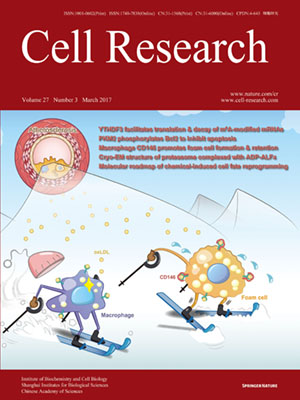
Volume 27, No 3, Mar 2017
ISSN: 1001-0602
EISSN: 1748-7838 2018
impact factor 17.848*
(Clarivate Analytics, 2019)
Volume 27 Issue 3, March 2017: 448-451
LETTERS TO THE EDITOR
The glial actin cytoskeleton regulates neuronal ciliogenesis
Hao Zhu1, Lianwan Chen2, Yihong Yang1, Zhiwen Zhu1, Xianliang Zhang1, Wei Li1, Long Miao2, Yan Zhang1 and Guangshuo Ou1
1Tsinghua-Peking Center for Life Sciences, School of Life Sciences, Tsinghua University, Beijing 100084, China
2Institute of Biophysics, Chinese Academy of Sciences, Beijing 100081, China
Correspondence: Guangshuo Ou, E-mail: guangshuoou@tsinghua.edu.cn; Yan Zhang,(zhangyan1011@gmail.com)
Cilia are remarkable microtubule (MT)-based organelles that are essential for cell motility, sensory perception and signal transduction1. Ciliary defects have been implicated in various human diseases1. Although the rod-shaped cilium morphology and the axonemal structure characterized by nine-doublet MTs were described decades ago2,3, the molecular regulations of cilium morphology and axonemal structure are still poorly defined. The formation and maintenance of cilia require bidirectional intraflagellar transport (IFT) that is powered by MT-based kinesin-2 and IFT-dynein motor proteins1,4.
10.1038/cr.2016.131
FULL TEXT | PDF
Browse 1933


